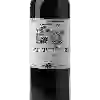
Winery Marc JambonBeaujolais Chardonnay Blanc
This wine generally goes well with pork, vegetarian or poultry.
Food and wine pairings with Beaujolais Chardonnay Blanc
Pairings that work perfectly with Beaujolais Chardonnay Blanc
Original food and wine pairings with Beaujolais Chardonnay Blanc
The Beaujolais Chardonnay Blanc of Winery Marc Jambon matches generally quite well with dishes of pork, rich fish (salmon, tuna etc) or vegetarian such as recipes of beef stew, smoked salmon and herb sandwich cakes or mushroom, bacon and gruyere quiche.
Details and technical informations about Winery Marc Jambon's Beaujolais Chardonnay Blanc.
Discover the grape variety: Chardonnay
The white Chardonnay is a grape variety that originated in France (Burgundy). It produces a variety of grape specially used for wine making. It is rare to find this grape to eat on our tables. This variety of grape is characterized by small bunches, and small grapes. White Chardonnay can be found in many vineyards: South West, Burgundy, Jura, Languedoc & Roussillon, Cognac, Bordeaux, Beaujolais, Savoie & Bugey, Loire Valley, Champagne, Rhone Valley, Armagnac, Lorraine, Alsace, Provence & Corsica.
Informations about the Winery Marc Jambon
The Winery Marc Jambon is one of of the world's greatest estates. It offers 33 wines for sale in the of Beaujolais to come and discover on site or to buy online.
The wine region of Beaujolais
Beaujolais is an important wine region in eastern France, famous for its vibrant, Fruity red wines made from Gamay. It is located immediately South of Burgundy, of which it is sometimes considered a Part, although it is in the administrative region of Rhône. The extensive plantings of Gamay in this region make Beaujolais one of the few regions in the world that is so concentrated on a single Grape variety. Pinot Noir is used in small quantities in red and rosé wines, but in the name of regional identity, it is being phased out and will only be allowed until the 2015 harvest.
The word of the wine: Rebêche (champagne)
Must obtained in excess of the 2 550 litres authorised for a weight of 4 000 kilos of grapes. The first 2 050 litres constitute the cuvée and the next 500 litres the taille. The rebêche represents 1 to 3 % of the total volume and must be distilled or used to make ratafia.














